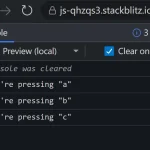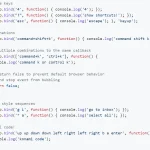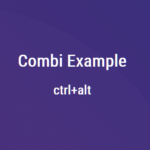| Author: | rameel |
|---|---|
| Views Total: | 79 views |
| Official Page: | Go to website |
| Last Update: | March 10, 2025 |
| License: | MIT |
Preview:

Description:
Hotkey is a tiny (less than 1kb gzipped) JavaScript library for handling keyboard shortcuts and hotkeys in your web applications.
You can use this library to listen for key combinations like Ctrl+K on the window, document, or specific DOM elements to trigger custom logic.
How to use it:
1. Install the package and import the Hotkey.js library as follows:
# NPM $ npm install @ramstack/hotkey
<script type="module">
import { registerHotkey } from "https://cdn.jsdelivr.net/npm/@ramstack/hotkey@1/dist/hotkey.esm.min.js";
</script>// OR <script src="https://cdn.jsdelivr.net/npm/@ramstack/hotkey@1/dist/hotkey.min.js"></script>
2. The library provides a simple registerHotkey method to set up hotkey bindings on page elements. You can find all standard key names on Key values for keyboard events.
registerHotkey("#app", "Ctrl + K", e => {
// do something
});
registerHotkey(document, "Ctrl + K", e => {
// enable the hotkey on the whole document
});3. Specify the event to trigger the key bindings. Default: ‘keydown’.
registerHotkey("#app", "Ctrl + K", e => {
// do something
}, "keyup");4. Ensure that only events marked as trusted are handled. This can help prevent synthetic or untrusted events from triggering hotkeys.
registerHotkey("#app", "Ctrl + K", e => {
// do something
}, "keyup", {
trusted: true
});5. Prevent hotkey handling on certain elements using the data-hotkey-ignore attribute:
<input type="text" data-hotkey-ignore>
Changelog:
v1.1.0 (03/10/2025)
- Add trusted option










